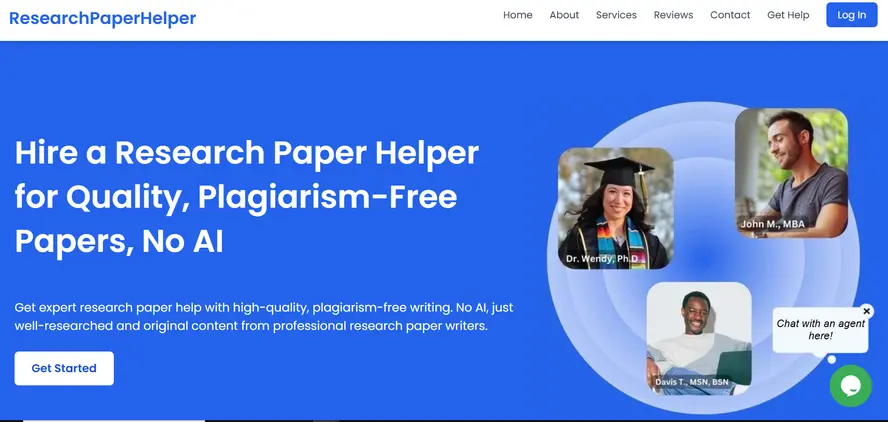
Data analysis is the engine of your dissertation, turning raw numbers, interviews, or observations into conclusions that drive your research forward. Imagine spending months collecting data for your dissertation, only to stare at spreadsheets or transcripts, wondering how to turn them into defensible conclusions. That's the reality for many PhD and master's students, data analysis is where raw information meets scholarly rigor, but it's also where frustration peaks.
In this comprehensive guide, we'll dive into what makes data analysis the make-or-break phase of your dissertation, how to approach it step-by-step, and why partnering with a reliable data analysis help service like ours can be your secret weapon. Drawing from our team's 15+ years of experience in statistical data analysis help, qualitative data analysis, and tools like SPSS, R, and NVivo, we'll equip you with actionable insights to conquer your data analysis chapter.
Understanding Dissertation Data Analysis: The Core of Research
What is a dissertation data analysis? At its heart, data analysis in dissertation is the systematic process of examining, cleaning, transforming, and interpreting your collected data to test hypotheses and answer your research questions. It's the core of your dissertation data analysis chapter (typically Chapter 4 or 5), where you apply data analysis methods like statistical tests, thematic coding, or regression models to draw valid conclusions.
But what exactly is data analysis in research? It's the bridge between your methodology and conclusions, using techniques like exploratory data analysis to uncover patterns or inferential statistics to test relationships. From selecting the right data analysis methods to writing a flawless dissertation data analysis chapter, the process demands technical prowess, statistical savvy, and narrative skill.
Unlike raw data collection, analysis focuses on patterns, relationships, and significance, ensuring your findings are reliable and contribute to your field. So, what to include in data analysis for dissertation pretty much depends on your research objectives, methods, design, and type of data collected.
Key types of Dissertation Data Analysis
- Quantitative Data Analysis: Focuses on numerical data, using stats like means, t-tests, or ANOVA to measure variables (how to write quantitative data analysis for dissertation).
- Qualitative Data Analysis: Explores non-numerical data like text or images, through coding, narrative analysis, or grounded theory (how to write qualitative data analysis for dissertation).
- Mixed Methods: Combines both for a holistic view, often in social sciences or business dissertations.
Key Elements of Dissertation Data Analysis
- Data Preparation: Cleaning and organizing your dataset, handling missing values or outliers to ensure accuracy.
- Descriptive Statistics: Summarizing data with means, medians, or frequencies to provide an overview (exploratory data analysis).
- Inferential Statistics: Testing hypotheses with tools like t-tests, regression, or correlation for quantitative data analysis.
- Thematic or Pattern Identification: Coding and categorizing for qualitative data analysis, revealing emerging themes.
- Visualization: Charts, graphs, or tables to illustrate findings, making complex data accessible.
- Interpretation: Linking results to your research questions, discussing implications, and addressing limitations.
- Ethical Considerations: Ensuring data privacy, validity, and reliability throughout.
Our professional dissertation data analysis services incorporate these elements seamlessly, using industry-standard data analysis tools like SPSS, R, Stata, NVivo, or Excel (excel data analysis).
The Biggest Challenges in Dissertation Data Analysis
Data analysis isn't for the faint of heart, it's where many dissertations falter. From our experience helping over 5,000 students, here are the top pitfalls and how our dissertation data analysis service overcomes them:
- Overwhelming Method Choices: With dozens of data analysis methods, from chi-square tests to discourse analysis, picking the right one feels like guesswork. We match methods to your research design, ensuring alignment (e.g., logistic regression for binary outcomes in healthcare studies).
- Software Struggles: Learning data analysis tools like SPSS or ATLAS.ti can take weeks, and errors lead to invalid results. Our experts are proficient in 20+ tools, providing clean, reproducible analysis with code snippets for your defense.
- Data Cleaning Nightmares: Messy datasets, missing values, outliers, or inconsistencies, can skew everything. We handle preprocessing, using techniques like imputation or normalization to ensure accuracy.
- Interpretation Pitfalls: Knowing what your p-value means or how a theme emerges is one thing; writing it compellingly is another (how to write data analysis in dissertation). We craft narratives that link results to theory, avoiding common traps like overgeneralization.
- Formatting Fiascos: Universities have strict dissertation data analysis format rules, tables in APA style, figures with captions. We adhere to your guidelines, making your chapter visually appealing and compliant.
- Time and Cost Pressures: Analysis can devour your timeline and wallet, especially for big data analysis. Our cheap dissertation data analysis services start at $150, with fast turnarounds to keep you on track.
- Ethical and Validity Concerns: Ensuring reliability (e.g., Cronbach's alpha > 0.7) and validity while maintaining data privacy is crucial. We build in ethical checks, like anonymization for qualitative data.
These issues explain why searches for “dissertation data analysis help” spike during crunch time. Our data analysis service provider team, statisticians, qualitative researchers, and academic writers, turns these challenges into strengths, with a 98% client satisfaction rate.
How to Write Data Analysis in Your Dissertation: Step-by-Step Guide
Writing your dissertation’s data analysis chapter doesn’t have to feel like a black box. If you’ve been searching how to write data analysis in dissertation, what to include in data analysis for dissertation, or how to write data analysis section of dissertation, this detailed, battle-tested guide walks you through every step.
Whether you’re working on a quantitative or qualitative study, or a mix of both, these tips will help you produce clear, credible, and publication-ready analysis.
🧠 1. Realign with Your Research Questions
Before you run your first t-test or start coding transcripts, take a moment to revisit your research questions or hypotheses. This step ensures your data analysis is targeted and relevant, a key principle in what to include in data analysis for dissertation.
- Quantitative example: “Does telehealth improve satisfaction scores?” (Test with t-tests or ANOVA)
- Qualitative example: “What factors influence patient experiences?” (Code for themes like accessibility)
- Ask: Does my data directly address these? If not, refine your scope before proceeding
By realigning now, you avoid wasting time on irrelevant analysis later.
🧭 2. Prepare and Clean Your Data
Raw data is rarely analysis-ready. Whether you’re working in SPSS, NVivo, or Excel, cleaning ensures accuracy and credibility in your results, a must for any dissertation data analysis format.
- Import data into the right tool: SPSS for stats, NVivo for qualitative themes
- Remove duplicates, handle missing values (e.g., mean imputation), and check for normality
- Run exploratory checks like histograms or box plots to identify trends or outliers
- Nursing example: Clean survey responses, categorize open-ended feedback into preliminary groups
Skipping this step risks a “garbage in, garbage out” scenario.
📚 3. Select and Apply the Right Methods
Your analysis methods should match both your data type and your research goals. If you’ve been wondering how to write data analysis section of dissertation, this is where you make those crucial decisions.
- Quantitative: Descriptive stats (frequencies, means), inferential tests (correlation, regression, ANOVA)
- Qualitative: Open and axial coding, thematic analysis; ATLAS.ti or NVivo for organization
- Mixed methods: Triangulate, e.g., use statistical tests to confirm qualitative themes
- Document your process: “We used Pearson’s correlation to test relationships (p < 0.05)”
Clarity here makes your analysis replicable and defensible.
🧱 4. Present Results Objectively
The results section is for facts only, interpretation belongs in the discussion. Following your dissertation data analysis format will keep things organized and examiner-friendly.
- Use visuals: Tables for raw numbers, charts for trends (e.g., bar graph of satisfaction scores)
- Label figures clearly: “Figure 1: Distribution of Patient Responses (N=200)”
- Present by variable or method, with subheadings for clarity
- Nursing example: “Telehealth users reported 15% higher satisfaction (M=4.2, SD=0.8) than in-person patients (M=3.6, SD=0.9)”
This approach keeps your work precise and transparent.
✍️ 5. Interpret and Discuss Findings
Now it’s time to give your results meaning. This is the heart of how to write data analysis in dissertation, telling the story behind the numbers and codes.
- Link findings back to your research questions
- Compare to literature: “This supports Smith (2022) but challenges Jones (2020)”
- Discuss implications: “Telehealth could reduce healthcare disparities in rural areas”
- Acknowledge limitations: “Self-selection bias may have influenced results”
The stronger your links between evidence, literature, and interpretation, the more compelling your chapter will be.
🔁 6. Validate and Address Ethics
Strong analysis is trustworthy analysis. Whether you’re doing the work yourself or using PhD dissertation statistical data analysis help, reliability, validity, and ethics must be addressed.
- Reliability: Test-retest methods or Cronbach’s alpha for scales
- Validity: Content or construct checks to ensure your measures are sound
- Ethics: Confirm IRB approval, maintain participant anonymity, and secure all data
This adds credibility and defensibility to your dissertation.
🏁 7. Refine, Visualize, and Integrate
The final pass is about clarity, impact, and cohesion with your full dissertation.
- Improve flow: Use transitions like “Building on these results…” between sections
- Upgrade visuals: High-quality charts, scatterplots, or thematic maps
- Integrate: Cross-reference findings in your discussion and conclusion chapters
- Proofread: Check clarity, consistency, and adherence to your university’s dissertation data analysis format
Final tip: Start with exploratory data analysis to guide your method choices, it’s like building your chapter with a map in hand. If you want help for complex statistical work, consider hiring a dissertation data analysis expert.
Why Use Professional Dissertation Data Analysis Services
Dissertation data analysis is more than just running numbers. Students and researchers often search “dissertation data analysis services”, “help with dissertation data analysis”, or “SPSS data analysis help” when they need methodologically sound, correctly interpreted, and properly presented results that meet institutional requirements.
Here’s how our professional dissertation data analysis service works, and why it’s trusted at both master’s and PhD levels.
1. 📋 Methodology-Aligned Statistical Design
A well-executed dissertation data analysis chapter starts with a solid analytical plan. Many students reach out after realizing their chosen methods don’t align with their research questions or data type. Our dissertation data analysis help begins with ensuring your chosen methods are statistically valid and academically justifiable.
We do this by:
- Reviewing your research questions, hypotheses, and study design
- Matching the correct statistical or qualitative method to your dataset
- Checking all test assumptions (normality, independence, homoscedasticity) before analysis
- Preparing a structured analysis plan you can defend during your viva
2. 🧹 Data Cleaning and Pre-Processing
Before statistical analysis can begin, data must be error-free and in the correct format. Inaccurate datasets lead to invalid results, which is why our data analysis service includes comprehensive preparation.
Our process includes:
- Identifying and managing missing data via imputation, deletion, or statistical methods
- Detecting outliers using standardized z-scores or IQR analysis
- Recoding and labeling variables for clarity in SPSS, R, Stata, or NVivo
- Applying transformations to meet statistical assumptions when necessary
3. 📊 Accurate Statistical or Qualitative Execution
When students type “SPSS dissertation help” or “thesis data analysis help”, they often need expert handling of the actual tests. We carry out the full range of analyses with academic precision.
Examples include:
- Descriptive statistics; means, medians, standard deviations, frequency tables
- Inferential statistics; t-tests, ANOVA, chi-square tests, correlation, regression models
- Advanced techniques; factor analysis, logistic regression, structural equation modeling (SEM)
- Qualitative; thematic analysis, coding frameworks, mixed-method synthesis
4. 🧠 Expert Interpretation of Findings
Raw output is meaningless unless interpreted in context. Our dissertation data analysis writing services translate results into academically sound explanations.
We ensure:
- Statistical results are clearly explained in plain academic language
- Findings are directly linked to your hypotheses and literature review
- Both significant and non-significant results are discussed with correct interpretation
- Tables, figures, and charts are integrated for visual clarity
5. 📑 Formatting for the Dissertation Data Analysis Chapter
Formatting errors can cost marks or lead to revision requests. Our dissertation data analysis service prepares your chapter in strict compliance with your institution’s guidelines.
We provide:
- APA, MLA, Harvard, or university-specific formatting for tables and figures
- Correct statistical notation and reporting style
- Labeled and captioned visual elements for immediate understanding
- Appendices containing raw output for transparency and reproducibility
6. 🎓 Subject-Specific Statistical Expertise
Different academic disciplines require different analytical approaches. Our professional dissertation data analysis services adapt methods for your exact field.
We specialize in:
- Psychology & Social Sciences; reliability testing, correlation matrices, MANOVA
- Business & Economics; regression for market data, time series, forecasting models
- Engineering; model validation, error analysis, reliability engineering statistics
- Life Sciences; biostatistics, survival analysis, experimental data modeling
7. ✅ Verification and Quality Assurance
We don’t just run the tests; we validate every output. This is why our reliable data analysis help is used by doctoral candidates.
Our checks include:
- Cross-verifying results against raw datasets
- Ensuring statistical syntax is error-free in SPSS, R, or Stata
- Checking numerical accuracy in text, tables, and charts
- Re-running analyses if inconsistencies are found
8. ✏️ Integration Into Your Dissertation
If you’re looking for “write my dissertation proposal” or “dissertation writing help”, we know this stage can make or break your project. We integrate your results directly into the data analysis chapter.
We can:
- Write the results section using your completed analysis
- Ensure smooth connection to the discussion chapter
- Provide all statistical and qualitative evidence in appendices
Bottom line: Whether you need SPSS data analysis help, thesis data analysis help, or PhD dissertation statistical consulting, our services ensure your analysis is methodologically correct, clearly interpreted, and ready for academic scrutiny.
Types of Dissertation Data Analysis We Help With
Our dissertation data analysis writing services help you transform raw data into meaningful academic insights. Whether you need quantitative, qualitative, or mixed-methods support, our experts provide precise, well-documented analysis that meets your university’s highest standards. From statistical modeling to thematic coding, we tailor each project to your research objectives and discipline.
Quantitative Data Analysis
Quantitative data analysis applies statistical methods to test hypotheses and measure relationships between variables. If you’re searching how to write quantitative data analysis for dissertation, we ensure accurate, reproducible results using tools like SPSS, R, or Stata.
- Regression, ANOVA, t-tests, and factor analysis
- Large dataset handling and hypothesis testing
- Ideal for social sciences, business, STEM, and medical research
Qualitative Data Analysis
Qualitative data analysis interprets non-numerical data to uncover themes, patterns, and narratives. For how to write qualitative data analysis for dissertation, our experts use software like NVivo to code and interpret interviews, documents, or media.
- Thematic coding, content analysis, and discourse analysis
- In-depth interpretation linked to research questions
- Best for humanities, education, and social research
Content Analysis
Content analysis systematically reviews texts, media, or social content to quantify and interpret patterns. Our dissertation data analysis services make this process rigorous and replicable.
- Media framing, frequency counts, and keyword mapping
- Documented methodology for academic validity
Econometric Modeling
Econometric modeling uses statistical techniques to analyze economic or financial data. Perfect for students seeking professional dissertation data analysis services in economics, finance, or policy studies.
- Time-series, cross-sectional, and panel data analysis
- Forecasting and model testing with R or EViews
Bioinformatics & Big Data Analysis
For dissertations in life sciences or technology, our team handles large-scale datasets with advanced computational tools. If you need big data analysis or bioinformatics expertise, we deliver precise, replicable findings.
- Sequence alignment, gene expression analysis, and ML algorithms
- Processing massive datasets using Python or specialized platforms
Survey Analysis
Survey analysis extracts insights from questionnaire data, using both descriptive and inferential statistics. Our dissertation data analysis writing services ensure your survey results are statistically valid.
- Reliability checks, cross-tabulation, and correlation analysis
- Visual presentation of key survey findings
Case Study Data Analysis
Case study analysis combines qualitative and quantitative methods for deep exploration of real-world issues. We provide mixed methods dissertation data analysis that integrates multiple data sources.
- Pattern matching and triangulation
- Comparative case evaluations
Secondary Data Analysis
Secondary data analysis mines publicly available datasets to answer research questions efficiently. If you need secondary data analysis for dissertation, we locate, clean, and analyze the right data for your project.
- Use of datasets from Census, WHO, IMF, or other repositories
- Statistical and thematic analysis of pre-existing data
Visualization & Reporting
Data visualization turns complex results into clear, compelling visuals. Our electronic data analysis service includes presentation-ready charts and dashboards.
- Custom graphs, heatmaps, and infographics
- Tableau, Power BI, and Excel-based dashboards
Chapter Editing & Refinement
Already have your data analysis written? Our dissertation data analysis editing improves clarity, academic tone, and logical flow.
- Grammar, formatting, and structural edits
- Feedback incorporation for higher impact
If you need expert data analysis services for your dissertation, our team can handle every step, from raw data processing to final presentation. Contact us today to get professional, precise, and plagiarism-free results.
Can I Pay for Dissertation Data Analysis Services?
Yes, and it’s one of the smartest investments you can make in your research. If you’re searching “dissertation data analysis services,” “pay someone for dissertation data analysis,” or “dissertation data analysis cheap,” we’ve got you covered. Our professional dissertation data analysis service delivers 100% custom, confidential, and results-driven support.
With secure payments, NDAs, and transparent pricing (no hidden fees), you can trust us for ethical, high-quality help. We never reuse or resell data, your analysis is yours alone.
Why Choose Our Dissertation Data Analysis Service?
In a crowded market of dissertation data analysis service providers, here’s why we’re the go-to choice for serious researchers, PhD candidates, and MBA students worldwide:
- 📊 Proven Track Record:
We’ve analyzed over 2,500 dissertations, achieving a 99% committee approval rate and contributing to publications in top academic journals. - 🎓 Expert Data Analysists:
Work with PhD statisticians, qualitative research specialists, and field-specific experts, each with 10+ years of experience in academia and industry. Whether you need SPSS dissertation help, NVivo coding, or R/Python analysis, we’ve got the skills. - 🛠 Cutting-Edge Tools:
We use licensed, up-to-date software: SPSS, SAS, R, Python, NVivo, Stata, never shortcuts or outdated methods. - 💰 Affordable Excellence:
Get quality without overpaying. Packages start at $150 for basic data support and go up to $800 for full results chapters, with flexible payment plans for dissertation data analysis cheap requests. - ✅ Ethical Integrity:
Full compliance with academic integrity guidelines. We provide original work, secure your data, and maintain total transparency. - 🌍 Global, 24/7 Support:
We assist students from Harvard to Oxford, offering dissertation data analysis help online via chat, email, or call, any time, anywhere. - ♻ Guaranteed Free Revisions:
Unlimited revisions until you’re satisfied, plus a money-back guarantee if we don’t meet your requirements. - 🎁 Bonus Resources:
Free templates, tutorials, and sample datasets to help you master your own analysis skills.
When you need a professional dissertation data analysis writer who can turn raw numbers into powerful, defense-ready insights, we’re your strategic partner.
Trending Dissertation Data Analysis Methods and Tools
Stay ahead with these cutting-edge data analysis methods and data analysis tools transforming dissertations:
Methods
- Machine Learning Integration: Predictive modeling with random forests or neural nets for big data in tech or finance (big data analysis).
- Mixed Methods Triangulation: Combining stats and themes for robust insights in education or psychology.
- Network Analysis: Mapping relationships in social sciences using graph theory.
- Bayesian Statistics: Probabilistic approaches for uncertainty in healthcare dissertations.
- Narrative Inquiry: Story-based analysis for qualitative humanities or business cases.
Tools and Software
- R and Python: Free, powerful for custom scripts and visualizations (data analysis tools).
- SPSS/Stata: User-friendly for stats-heavy fields like sociology (spss data analysis help).
- NVivo/MAXQDA: Qualitative coding with AI-assisted theme detection.
- Tableau/Power BI: Interactive dashboards for dynamic data presentation (electronic data analysis service).
- Excel Advanced: Pivot tables and VBA for quick exploratory data analysis (excel data analysis).
These trends reflect the shift toward AI-augmented analysis, our team is fluent in them all.
Get Your Dissertation Data Analysis Done Today
Data analysis is one of the most critical, and challenging, parts of completing your dissertation. From selecting the right methodology to interpreting results accurately, every detail matters. Our professional dissertation data analysis service connects you with expert statisticians and academic writers who make the process clear, precise, and stress-free.
Here’s how to get started:
- Share Your Dissertation Details: Upload your research question, dataset, methodology, and any relevant guidelines securely through our platform.
- Pick Your Dissertation Expert: Choose a dissertation data analyst skilled in your chosen tools and techniques, SPSS, Stata, R, NVivo, Excel, or others.
- Get Your Dissertation Analysis: Receive accurate, well-documented statistical analysis with clear explanations, charts, and tables that align with your research objectives.
- Enhance Your Skills: Use our feedback and insights to better understand your data and strengthen your academic work.
Whether you need help with quantitative, qualitative, or mixed-methods analysis, we’ll provide results you can trust.
Start today and make your dissertation data analysis the strongest part of your research, with professional support tailored to your field.











